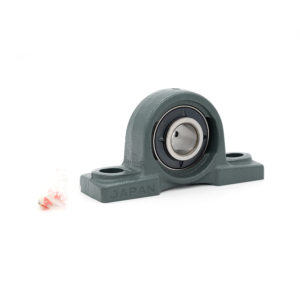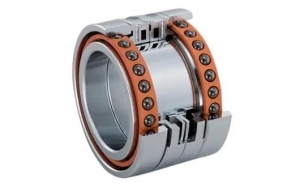Japan Bearing Industry History
Although Japan’s bearing industry started late, its development speed is fast, and in recent years it has become the world’s leading bearing power and power. Japan is a strong country in the production of precision bearings, leading the world in terms of product development, design and manufacturing, technological level, product quality and production equipment.
The development history of Japan’s bearing industry
Pay attention to improving the level of technology and quality
Same as “Made in Japan” synonymous with poor quality and low price, the development of the Japanese bearing industry has also experienced unsatisfactory periods. For example, before 1980, the first choice of bearing manufacturers for the important positions of industrial manufacturing in European and American countries were Timken and FAG, and only Japanese bearings were used in the secondary position.
Later, in the process of developing trade revitalization, Japan gradually paid attention to the technical level and quality level of the development of the bearing industry, and paid great attention to product quality management. With the continuous improvement of product quality level, Japan implemented export inspection exemption policy after 1993. Although Japan has a global open market, it rarely applies foreign bearing brands due to its strong domestic bearing industry. Japanese bearings have good quality and are also based on the support of two technologies.
ONE: Process equipment and technology;
TWO: Ultra-cleanliness bearing steel.
In terms of process equipment and technology, Japanese bearing companies pay great attention to it. Automatic production lines, CNC machine tools, and automated machine tools are commonly used in the manufacturing process. Large-scale enterprises extensively independently manufacture important equipment and use this as the core technology. In terms of vibration, noise and abnormal sound, Japan has introduced silent and ultra-quiet bearings. Compared with Japanese bearings, the vibration extreme level of Chinese bearings generally differs by more than 10dB. For example, Japan’s low-noise deep groove ball bearing technology was applied in an automated production line in 1959. The accuracy of the product has been significantly improved, and the price of the product has been greatly reduced.
The country is very concerned
Japan is the country that pays the most attention to the development of the bearing industry in the world. For a long time, Japan has always regarded the bearing industry as a pillar industry such as the foundation for improving people’s lives, the core machinery industry, and the defense industry. After the 1950s, Japan enacted the Electromechanical and Machinery Promotion Law, which paid special attention to and supported the development of the bearing industry. Among them, the creation of a scientific production system, that is, restricting the types of production, organizing the production scale, and dividing the scope of production are very obvious measures. In this way, the development of the bearing industry can be effectively unified, which is conducive to the scale of production. , Centralization and improvement of professionalism.
Pay attention to the division of labor
Japan’s land area is roughly the same as that of my country’s Yunnan Province, but it has more than 30 bearing companies, including the top five bearing companies in the world, and has the world’s largest corporate equivalent density. Despite this, its status has been for decades. However, it is in an “ecological balance”, and it is not the same as that of the bearing companies in European and American countries where there is a very drastic reorganization and merger. In fact, competition among Japanese bearing companies has always existed. However, the focus of their competition is quality and technology, not vicious competition on prices, but joint implementation of monopoly policies on prices. Japanese bearing companies are not only large and powerful, many small and medium-sized bearing companies also have advanced technology and product quality in the global field. In short, one of the powerful tools that the Japanese bearing industry can gain a global competitive advantage is solidarity and mutual assistance and win-win development.
Implement internationalization strategy
In the 1950s and 1960s, Japan imitated and introduced advanced technologies from Europe and the United States through a cooperative technology model and low-cost labor cost advantages, and penetrated a lot of products in the world market. This caused excessive competition and overflowing of second-hand goods. Big trade friction. After nearly two decades of hard work, Japan has established a dominant position in many fields. Not only does its products have low prices, but they also have attentive services, complete functions, and high quality, which puts European and American countries facing very large competitive pressures. Currently, Japan’s five largest bearing companies have set up more than 200 overseas companies, and the sales of international markets account for at least two-thirds of the sales of domestic markets. Japanese bearing companies have continued to optimize and upgrade their overseas construction of branch factories, such as shifting from production based on previous demand to optimal production.
Japan Bearing Company List
NSK: Nippon Seiko Co., Ltd. Founded in the 1920s, it is currently the top three in the world, producing a full range of bearings.
NTN: Toyo Japan. It was established a little later than NSK. Top ten in the world, producing a full range of bearings, automotive bearings
KOYO: Japan Koyo. Top ten in the world, producing a full range of bearings, automotive bearings
NACHI: Fujitsu Co., Ltd. of Japan. Production of industrial robots and drill bits (one of the best in the world). Bearing products account for only a small part.
NMB: Production of miniature bearings. The scale of miniature bearings alone ranks among the top in the world
IKO: Linear motion series, needle roller bearings.
THK: Linear Motion Series
IJK: Precision bearings, miniature bearings, and widened bearings. Currently under NSK
ASAHI: Japan’s Asahi Seiko. Spherical bearing with seat.
FYH: Kobayashi Seiko of Japan. Spherical bearing with seat.
EZO: Miniature bearings, stainless steel bearings, special material bearings.
KYK (production of a full range of bearings),
JNS (Needle Bearing),
Misumi (bearings for toys, ball bearings, needle roller bearings, roller bearings), etc.






